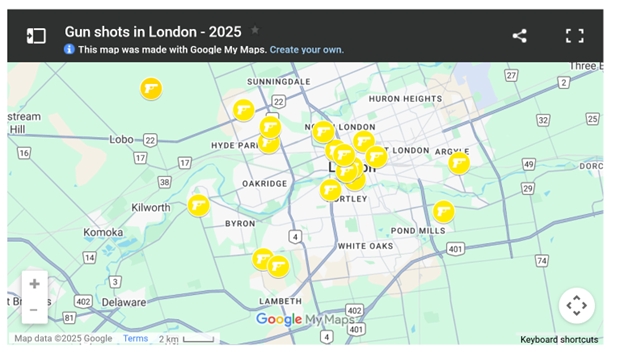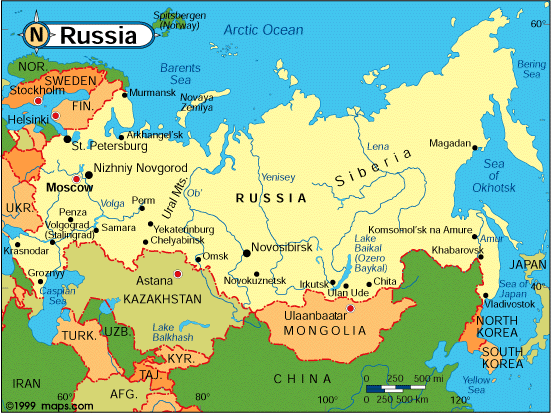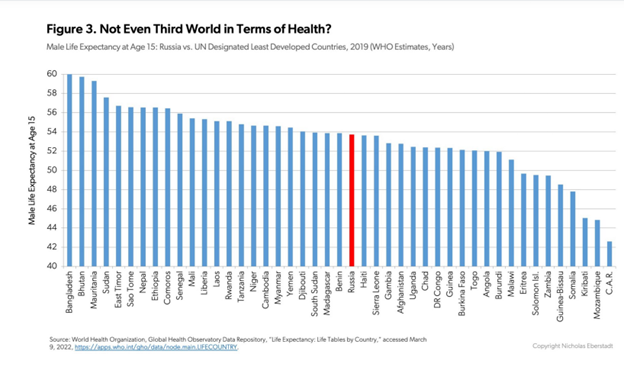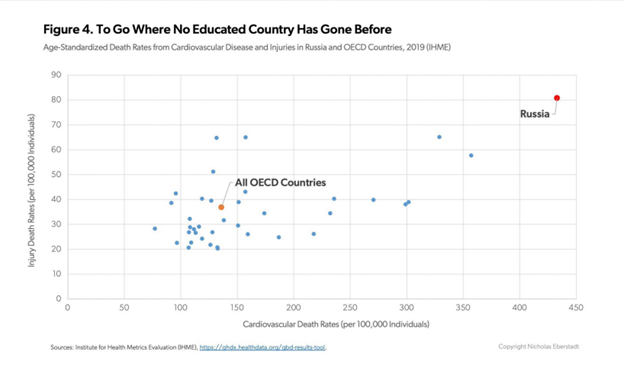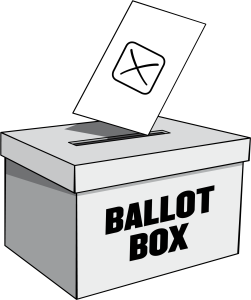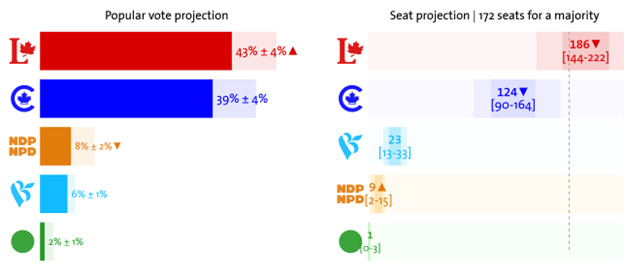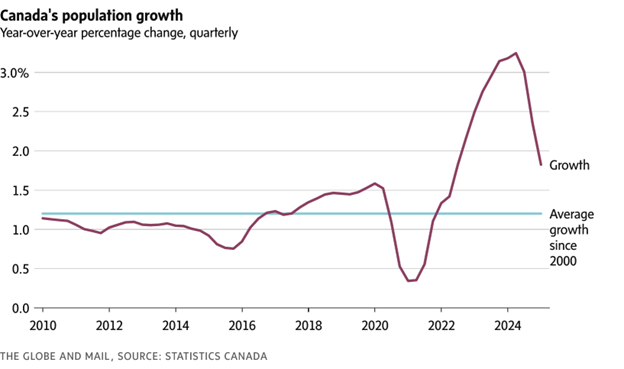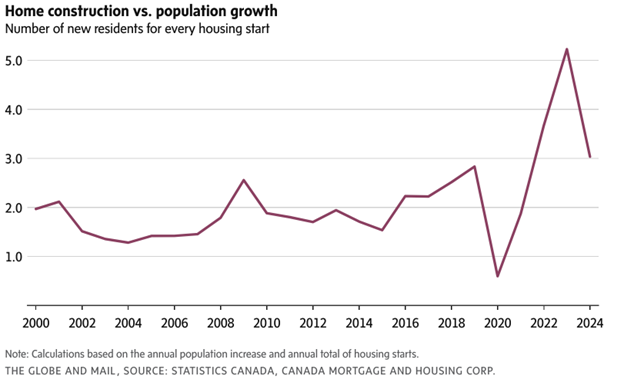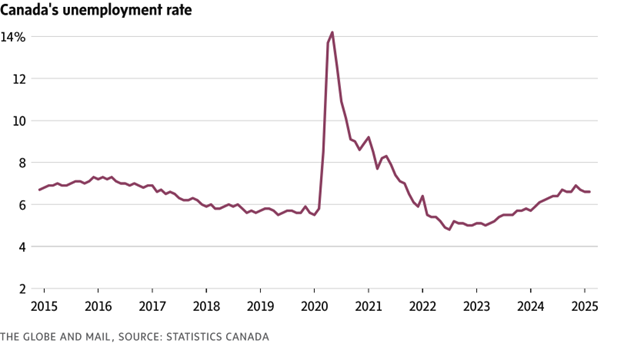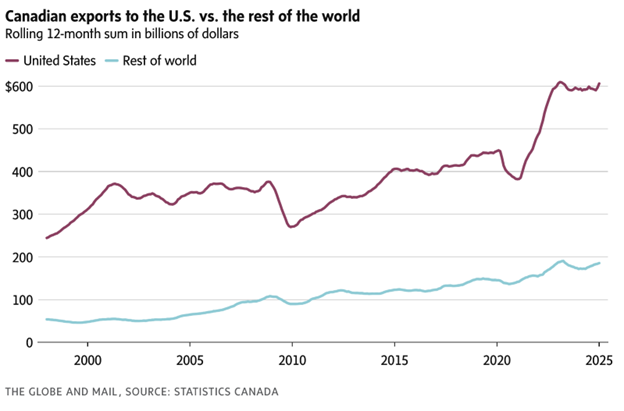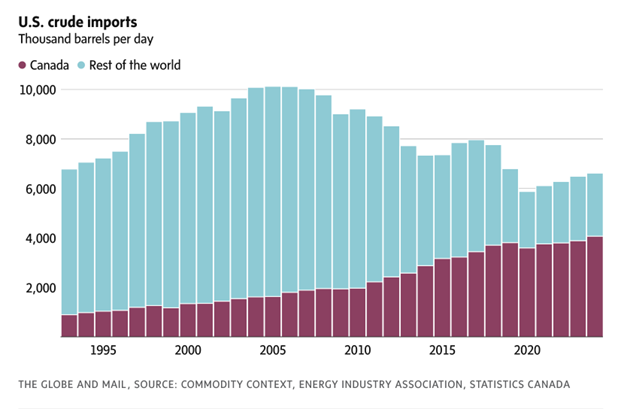I write this on the morning when the headline on the Globe and Mail website is US Triggers Trade War, with the sub-heading Canada retaliates Tuesday morning with levies on $30billion worth of goods.
I will undoubtedly spend the day editing and re-writing it, in hopes of being as clear about this as I possibly can.
The reason I’m writing this piece is a conversation I had with a good friend of mine yesterday. She had heard a report on the radio purporting to lay out what Trump might be up to regarding imposing tariffs, and she asked me, the ex-economist, if said report made sense. I listened and said ‘it does’, and then resolved to lay out the same argument here. This angle is not new, I expect it has been written about by others, but the fact that my friend found it to be a new idea suggests it has not been the dominant theme in the discussion of Trump’s tariffs, at least in Canada. Most of what has been written up to now is about the border, immigration, fentanyl and retaliation, rather than what I will lay out below.
A simple statement of this idea is that what Trump is trying to achieve in imposing tariffs on the USA’s biggest trading partners (Canada, Mexico and China) is to get manufacturing plants to move back to the US. Making this happen was certainly something he talked about in his campaign. What I will lay out is the logic behind that idea; I am not claiming it is a good (or bad) idea, nor even that it will work. This is just the logic behind that strategy. I am not even claiming that this is really what he is up to. I have no more ability to peer into that man’s mind than anyone else, and his own statements are all over the place. Again, if (a big if) this is what he is trying to do, here is the logic of that strategy, stated as simply as I can manage. I will speak here only of the tariffs imposed on Canada, to keep things as simple as possible.
A US tariff on goods imported from Canada is just a tax, and like any such tax on a product, it will raise the price paid by US consumers of those goods. A 25% tariff on an imported good will not necessarily raise the price by 25%, it could be less, depending on how the Canadian producers of the good as well as the US importers of said good respond to the imposition of the tariff. Either of them might lower the prices they charge in response to the tariff, thus making the ultimate price increase less than the full 25%.
However, whatever those folks do, the tariff will reduce the profits of the Canadian producers of those goods on two counts. One, the higher price to consumers will reduce US demand for the products, and two, any price reduction taken by the Canadian producers will cut into their margins on those goods. How big are either of those two effects depends on a lot of things, but those two effects will happen in some measure, without a doubt, and so will cut into Canadian producers’ profits.
Thus, the two groups of people hurt by such tariffs are the US consumers of the tariffed Canadian goods, and the Canadian producers of those goods, and their workers and owners/shareholders. [The US-based importers/resellers of the Canadian imports may be hit, too, of course.]
Why would Trump hurt those people? What is he hoping to accomplish? That’s the question, here is one answer.
If you are a firm in the business of selling any product in North America, you have to decide where to locate your production facilities. If you are going to locate them anywhere on the continent, you have two choices – the US or Canada.
With a US tariff on Canadian imports, you can locate in Canada, and see a tax imposed on the goods you ship to a market of 300 million consumers, but not on the market of 33 million consumers in Canada. Or, you can locate in the US and see a tax (if Canada imposes retaliatory tariffs, see below) imposed on the goods you sell to the 33million but not on the ones you sell to the 300 million. It is clear which way the US tariff will push you, other things equal (I will return to that clause below), if you are deciding where to locate your plant – toward a US location.
Moreover, if you already have a plant in Canada, built in the era of essentially zero tariffs, this same effect might push you to close it down and build a new plant in the US. Or, if you have plants in both countries, as do most auto producers, the tariff might induce you to move production from the Canadian to the US plants. Note that I am not claiming this will force any producer to do anything, plant location decisions are highly complex and depend on many factors; but the US tariff is one factor pushing plant locations toward the US and away from Canada.
So, as I said to my friend, this is not illogical. There are perfectly good economic arguments behind this strategy, it relies on no voodoo or lies.
Will it work?
How well might this work for Trump, again assuming that is what he is trying to do? I cannot possibly predict, but I can lay out some important issues.
One, producers have to believe that these tariffs are in place to stay. You don’t locate plants or re-locate plants on the basis of conditions that are likely to last for no more than a year or so. Given Trump’s apparent randomness, it remains to be seen how effective the US administration can be in convincing firms they intend to keep these tariffs in place. I will return to this when I discuss ‘retaliation’ below.
Plant location decisions do depend on many factors, including the general environment for doing business in a country. It is very early in the Trump administration, but once again his reputation for randomness may work against him. There are already signs that the US economy, particularly the consumer sector, is faltering a bit. Whatever one thinks about Trump’s efforts to slash the Federal government’s spending, massive layoffs are not going to be good for consumer demand in the US, and China’s retaliatory tariffs on US goods not helpful to US manufacturing and therefore consumer incomes, either. But the more basic point is that business does not like uncertainty, and Trump’s administration has so far delivered up a fair bit of that.
A key – I suspect – example of this right off the bat, lies in the US/Canada auto industry. All accounts I have read say that cars and auto parts currently cross the US/Can border many times in the course of auto production. That suggests that possibly these tariffs are going to wreak havoc on that very large industry. Adjusting to this new regime cannot possibly happen quickly, and in the meantime – a lot of uncertainty. I am predicting nothing specific here, just pointing out facts that are relevant to answering the ‘will it work?’ question. The real answer will unfold over time, and I am not a seer. I hasten to add, neither is anyone else.
If it Works
I see no way to avoid the conclusion that to the extent that this tariff strategy does push firms to locate production in the US rather than Canada, it is going to be bad for Canadians’ income and employment prospects. To be sure, there are plenty of products for which this is not going to be an issue, because Canada’s other advantages are too great to be overcome by any tariff. As an obvious example, Canada has plenty of natural resources that US manufacturers need, and that production can simply not be relocated to the US. (There may well be other countries that produce the same things, but they must be farther from the US and hence more expensive to purchase.)
However, that still points toward a future in which Canada’s economy goes back to being based on ‘hewing wood and drawing water’ (or extracting oil and potash, in the modern version). Conventional economic wisdom says you can’t do well as an economy if your production is focused on such low value-added activities.
I hasten to add that there may be productive activities in Canada, or that could be located in Canada, even in the face of US tariffs, that do represent high value-added production. I simply don’t know about them.
Canada’s Response
As the Globe sub-headline says, Canada’s government’s immediate response so far has been to retaliate with tariffs on US imports into Canada.
Good idea? I wrote about this already in a previous post here. I hope it was clear there that my answer is ‘No’, and that that answer has nothing to do with any threats to make the US tariffs bigger if Canada retaliates. The problem is that US imports are a big part of what Canadians consume, but Canadian imports are a very small part of what US consumers buy, whereas goods exported to the US make up a big chunk of Canadian production while US exports to Canada make up a small part of US production. Thus, US tariffs hurt Canadian producers a lot but American consumers only little, while Canadian tariffs hurt Canadian consumers a lot but American producers only little. It is not an even fight.
Better the Canadian government say ‘Mr President, Canada does not impose pointless taxes on its citizens as you are doing to yours’.
That’s not gonna happen, of course. Canada’s response is, unfortunately, about posturing for Canadian voters, and about standing up to an asshole. I get that, but it is going to hurt Canadians even if Trump does not carry out his threatened escalation.
And, I admit that I want to get back at Trump, too. The question is, how? More precisely, how might Canada respond in a way that might cause Trump to re-think this strategy.?
If there are particular US imports into Canada that can be targeted because tariffs on them will harm US producers who have some clout with the Trump administration, then I say go for it. I simply don’t know what those might be.
Moreover, I fear there are no such products, simply because I see no reason to think Trump can be dissuaded from this course by anybody if it is indeed the course he is on. Remember that he is a lame duck president, in his constitutionally-limited last term in office. He has no reason to give a fig about his popularity, nor has there ever been any sign he cares about whether the president who follows him is a Republican. I fear he’s going to do what he wants no matter how much complaining there is from anyone in the US – if indeed there is any that he lets himself hear.
If the auto industry is upended, and other sectors of the US productive economy are harmed, either by Trump’s own tariffs or those imposed by Canada, Mexico and China in response, and the stock markets head downward, complaining there will be, I expect. However, he is not someone who has ever shown much willingness to admit that he was wrong.
This leaves as the only useful response for Canada a strategy of looking for other markets for our products. That is a worthy endeavour, but I can’t say my confidence is high that our current crop of leaders is going to be good at it. Or, to be more accurate, finding new markets is pretty much a job for Canada’s private sector, and I have little faith that our political leadership will actually not get in the way of their doing that. Getting in the way has been the one apparent talent of Canadian government for some time now. Further, to the extent that exploration for new markets does happen in Canada, it is not going to have any impact on the Canadian economy for some time, maybe years. I am thus sadly left to conclude that the Canadian economy and its citizens are going to take a hit from Trump’s tariff strategy, with little hope for relief for some time. That’s a bleak picture, to be sure, but I write that here with no great confidence. As I indicated previously, the world is much too complex to have any faith in such a prediction if that is Trump’s true plan, I am not in any case sure that it is, and even if it is, Trump is much too volatile a person to have any faith that he will stick to it.
The only thing of which I am certain is uncertainty.








